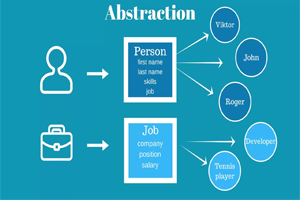BASICS OF COMPUTER:
Published: 5 Dec 2023
A computer is composed of hardware and software and can exist in a variety of sizes and configurations. The term hardware refers to the physical components of your computer such as the system unit, mouse, keyboard, monitor, etc. The software is the instructions that make the computer work.
The literal meaning of a computer is a device that can calculate. However, modern computers can do a lot more than calculate. A computer is an electronic device that receives input, stores or processes the input as per user instructions, and provides output in the desired format
A computer is an electronic device that receives input, stores or processes the input as per user instructions, and provides output in the desired format
sir
The literal meaning of a computer is a device that can calculate. However, modern computers can do a lot more than calculate. A computer is an electronic device that receives input, stores or processes the input as per user instructions, and provides output in the desired format
sir
The basic parts of a computer are as follows −
- Input Unit − Devices like the keyboard and mouse that input data and instructions to the computer are called input units.
- Output Unit − Devices like printers and visual display units that provide information to the user in the desired format are called output units.
- Control Unit − As the name suggests, this unit controls all the functions of the computer. All devices or parts of the computer interact through the control unit.
- Arithmetic Logic Unit − This is the brain of the computer where all arithmetic operations and logical operations take place.
- Memory − All input data, instructions, and data interim to the processes are stored in the memory. Memory is of two types – primary memory and secondary memory. Primary memory resides within the CPU whereas secondary memory is external to it.

INPUT DEVICES:
Input devices are the component of the computer system that accepts incoming data and instructions and converts them into a pattern of electrical signals in binary code that is understandable to a digital computer.
Example: Keyboard, mouse, etc.

OUTPUT DEVICE:
An output device is a piece of computer equipment that receives data from one source and converts it into another form. Depending on their function, output devices can transform data into various other forms such as audio, visual, or physical copy. Output devices may also perform more than one form conversion in some instances.
Depending on their function, output devices can transform data into various other forms such as audio, visual, or physical copy. Output devices may also perform more than one form conversion in some instances.Sir

Output devices allow users to better interact with computer equipment. They convert data signals into things that people can better understand, such as images or sounds. This means that users can utilize these devices to manipulate data into the most appropriate form for a given situation. This can increase the accessibility of the data and the user’s or audience’s ability to remember it accurately.
Conclusion:
Computers typically have three output devices built-in, including an audio adapter, a monitor, and a graphics processing unit (GPU), and also connect to output devices such as speakers and a keyboard.
A computer is composed of hardware and software and can exist in a variety of sizes and configurations. The term hardware refers to the physical components of your computer such as the system unit, mouse, keyboard, monitor, etc. The software is the instructions that make the computer work.
sir

- Be Respectful
- Stay Relevant
- Stay Positive
- True Feedback
- Encourage Discussion
- Avoid Spamming
- No Fake News
- Don't Copy-Paste
- No Personal Attacks

- Be Respectful
- Stay Relevant
- Stay Positive
- True Feedback
- Encourage Discussion
- Avoid Spamming
- No Fake News
- Don't Copy-Paste
- No Personal Attacks



